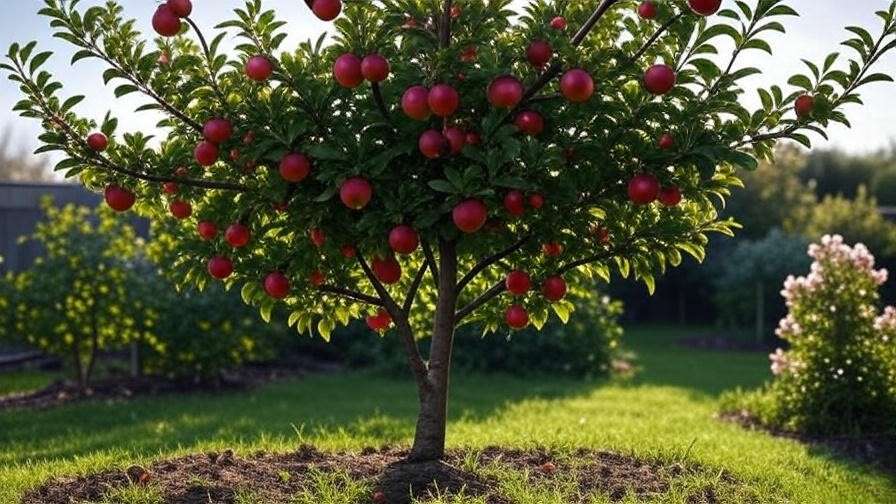Imagine biting into a crisp, sweet apple plucked straight from your own backyard — the Pixie Crunch apple tree makes this dream a reality! Known for its compact size and delectable, candy-like fruit, this variety is a favorite among home gardeners seeking a low-maintenance tree with high rewards. Whether you’re a seasoned grower or a beginner dreaming of your first orchard, this guide will walk you through every step to cultivate a thriving Pixie Crunch apple tree. Backed by horticultural expertise and trusted resources like Purdue University’s extension program, we’ll cover planting, care, and harvesting to ensure your tree flourishes and delivers bountiful harvests. Ready to grow your own sweet, crunchy apples? Let’s dive in! 🌿
1. Understanding the Pixie Crunch Apple Tree 🍏
1.1 What Makes the Pixie Crunch Special? 🌿
The Pixie Crunch apple tree, developed by Purdue University, is a modern cultivar celebrated for its crisp texture and sweet-tart flavor. Unlike larger apple varieties, this dwarf tree typically grows to 8-10 feet tall, making it perfect for small gardens, patios, or even containers. Its apples are medium-sized, vibrant red, and bursting with a candy-like sweetness that’s ideal for fresh eating, baking, or cider. According to Cornell University’s apple research, Pixie Crunch is also prized for its disease resistance, particularly to apple scab, which reduces the need for chemical treatments. This combination of compact size, exceptional flavor, and resilience makes it a top choice for home growers.
1.2 Benefits of Growing Pixie Crunch in Your Garden 🌞
Why choose a Pixie Crunch? Beyond its delicious fruit, this tree offers multiple advantages:
- Space-Saving: Its dwarf stature fits small yards or urban gardens, requiring only 8-10 feet of space.
- High-Quality Fruit: The apples are perfect for snacking, pies, or homemade applesauce.
- Aesthetic Appeal: Spring brings delicate pink-white blossoms, while fall delivers a vibrant harvest.
- Beginner-Friendly: Its disease resistance and manageable size make it ideal for novice gardeners.
These benefits make the Pixie Crunch a rewarding addition to any home orchard, delivering both beauty and bounty.
2. Choosing the Right Location and Conditions 📍
2.1 Ideal Climate and Hardiness Zones ❄️☀️
Pixie Crunch apple trees thrive in USDA Hardiness Zones 4-8, covering most of the U.S., from chilly northern states to milder southern regions. They prefer temperate climates with cold winters for dormancy and warm summers for fruit development. Check your local zone using the USDA’s Plant Hardiness Zone Map. In marginal zones (e.g., Zone 3 or 9), extra care like mulching or container growing can help. Microclimates matter too — avoid low-lying areas prone to frost pockets, as late spring frosts can damage blossoms.
2.2 Soil Requirements for Optimal Growth 🌱
Healthy soil is the foundation of a thriving Pixie Crunch. These trees prefer well-draining, loamy soil with a pH of 6.0-7.0. Test your soil using a kit from a reputable source like your local extension service or a garden center. If the pH is too low, add lime; if too high, incorporate sulfur or organic compost. Enrich poor soils with well-rotted manure or compost to boost fertility and drainage. Avoid heavy clay or waterlogged areas, as these can cause root rot. A simple soil test can save years of frustration — trust me, I’ve seen trees struggle in poorly prepared soil!
2.3 Sunlight and Space Needs 🌞
Pixie Crunch apple trees demand full sun — at least 6-8 hours of direct sunlight daily — to produce abundant fruit. Choose a south-facing spot with minimal shade from buildings or taller trees. For spacing, plant dwarf Pixie Crunch trees 8-10 feet apart to ensure good air circulation and prevent disease. If growing in a container, use a 15-20 gallon pot with drainage holes to accommodate the root system. Container gardening is a game-changer for urban gardeners, allowing you to move the tree to optimize sunlight or protect it from harsh weather.
3. Planting Your Pixie Crunch Apple Tree 🌳
3.1 When and How to Plant ⏰
The best time to plant a Pixie Crunch apple tree is early spring or fall, when temperatures are mild and roots can establish before extreme heat or cold. Follow these steps for success:
- Dig the Hole: Make it twice as wide and as deep as the root ball (about 2 feet wide and 1.5 feet deep).
- Prepare the Roots: For bare-root trees, soak roots in water for 1-2 hours before planting. Trim damaged roots.
- Plant the Tree: Place the tree in the hole, ensuring the graft union (the bulge where the rootstock meets the scion) is 2-3 inches above the soil line. Backfill with soil, tamping gently.
- Water and Stake: Water thoroughly and stake the tree to protect it from wind.
Avoid planting too deep, as this can suffocate roots, or too shallow, exposing them to drying out.
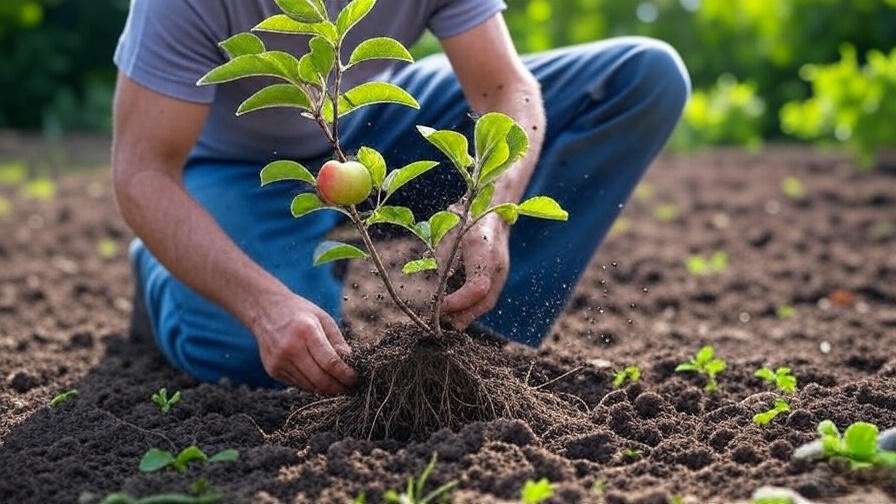
3.2 Selecting a Healthy Tree from a Nursery 🏬
Choose a Pixie Crunch from a reputable nursery to ensure quality. Look for:
- A strong, straight trunk with no cracks or damage.
- A healthy root system (moist, fibrous roots for bare-root; no circling roots for potted).
- No signs of disease, like discolored leaves or cankers.
Bare-root trees are cost-effective and establish well if planted promptly, while potted trees offer flexibility for later planting. Avoid trees with sparse branches or signs of stress. Reputable nurseries like Stark Bro’s or local extension-recommended suppliers are safe bets.
3.3 Pollination Needs for Fruit Production 🐝
Pixie Crunch apple trees are not self-pollinating and require a compatible pollinator tree to produce fruit. Varieties like Honeycrisp, Gala, or Fuji, blooming at the same time (mid-season), are excellent choices. Plant the pollinator within 50 feet for optimal bee activity. If space is limited, graft a compatible variety onto your Pixie Crunch or rely on nearby apple trees (e.g., a neighbor’s tree). Attract pollinators by planting bee-friendly flowers like lavender or marigolds nearby. FAQ: Do I need two apple trees? Yes, unless a compatible pollinator is already nearby.
4. Essential Care Tips for a Thriving Pixie Crunch 🌿
4.1 Watering Best Practices 💧
Watering is critical, especially in the first year. Provide 1-2 inches of water weekly, adjusting for rainfall. Use a soaker hose or drip irrigation to deliver water directly to the root zone, avoiding wet foliage that can invite disease. In hot, dry climates, check soil moisture with a finger test — if the top 2 inches are dry, water deeply. Overwatering can cause root rot, signaled by yellowing leaves, while underwatering leads to wilting. Established trees need less frequent but deep watering to encourage deep roots.
4.2 Fertilizing for Healthy Growth 🌾
Fertilize your Pixie Crunch in early spring, just as buds begin to swell. Use a balanced fertilizer (e.g., 10-10-10) or an organic option like composted manure. Apply 1 pound of fertilizer per year of tree age, up to 5 pounds, spread evenly around the drip line (the area under the canopy). Avoid fertilizing late in the season, as this can spur growth vulnerable to winter damage. According to the University of Minnesota Extension, over-fertilizing can lead to excessive leaf growth at the expense of fruit — balance is key.
4.3 Pruning for Structure and Productivity ✂️
Pruning is essential for shaping your Pixie Crunch apple tree, promoting fruit production, and preventing disease. The best time to prune is late winter or early spring, before buds break but after the risk of hard freezes. Here’s a step-by-step guide:
- Remove Dead or Damaged Wood: Cut away any broken, diseased, or dead branches to improve tree health.
- Thin the Canopy: Remove crowded or crossing branches to improve air circulation and sunlight penetration, reducing disease risk.
- Shape the Tree: Aim for an open-center or modified central leader structure to maximize fruiting wood. For dwarf trees like Pixie Crunch, keep the height manageable (8-10 feet).
- Cut Back Suckers and Water Sprouts: These vigorous, non-fruiting shoots steal energy from the tree.
Use clean, sharp pruning shears and make angled cuts just above a bud. Avoid over-pruning, which can stress the tree. A common mistake is pruning too late, which can reduce fruit yield — stick to the dormant season. For visual learners, diagrams (included in the final article) can clarify proper cuts. My experience pruning dwarf apple trees has shown that consistent, thoughtful pruning yields healthier trees and bigger harvests.
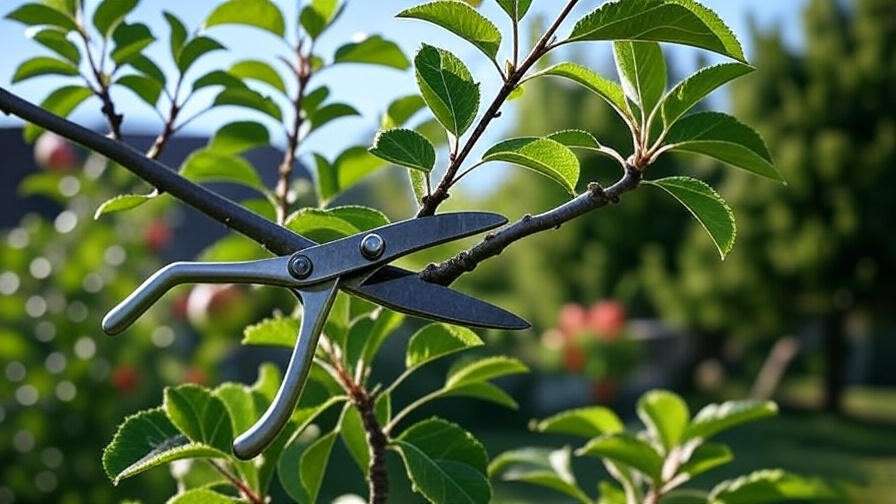
5. Protecting Your Pixie Crunch from Pests and Diseases 🐞
5.1 Common Pests and How to Manage Them 🕷️
Pixie Crunch apple trees face threats from pests like codling moths, apple maggots, and aphids. Here’s how to manage them:
- Codling Moths: These lay eggs that hatch into larvae, burrowing into apples. Use sticky traps or pheromone traps to monitor and reduce populations. Organic options include spraying kaolin clay to deter egg-laying.
- Apple Maggots: These pests create tunnels in fruit. Apply sticky red sphere traps in early summer to capture adults. Regular sanitation (removing fallen fruit) is key.
- Aphids: These sap-suckers cause leaf curling. Introduce beneficial insects like ladybugs or spray neem oil for control.
Encourage natural predators by planting companion plants like yarrow or dill. Regular monitoring, as recommended by the University of California’s Integrated Pest Management program, prevents infestations from spiraling.
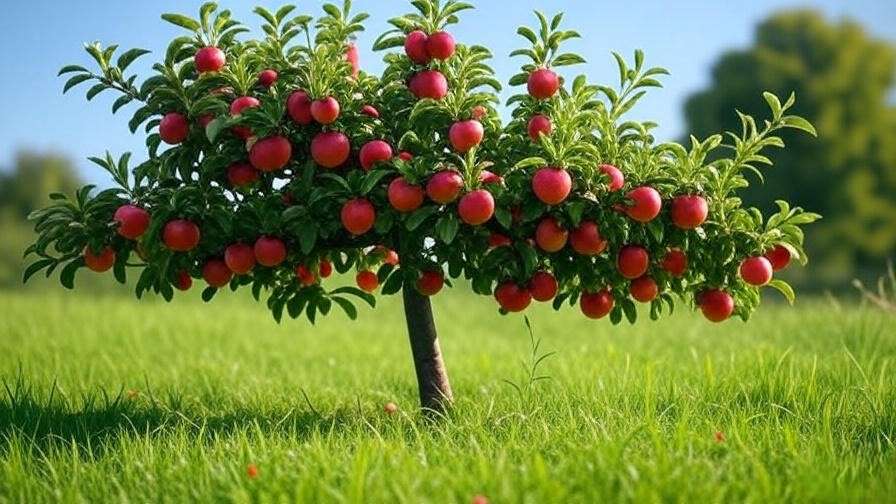
5.2 Diseases to Watch For 🦠
While Pixie Crunch is resistant to some diseases, it’s not immune. Common issues include:
- Fire Blight: A bacterial disease causing blackened, wilted shoots. Prune affected areas 12 inches below symptoms and sterilize tools between cuts. Avoid heavy nitrogen fertilization, which promotes susceptible growth.
- Apple Scab: Fungal spots on leaves and fruit. Choose resistant varieties like Pixie Crunch, but apply organic fungicides (e.g., sulfur) in wet springs if needed.
- Powdery Mildew: White coating on leaves. Improve air circulation through pruning and apply organic treatments like potassium bicarbonate.
A table summarizing symptoms, prevention, and treatments will be included in the final article for quick reference. Proactive care, like removing leaf litter, significantly reduces disease risk.
5.3 Winter Protection Strategies ❄️
Protecting your Pixie Crunch during winter ensures it thrives come spring. Apply a 2-4 inch layer of organic mulch (e.g., wood chips or straw) around the base, keeping it away from the trunk to prevent rot. In colder zones, wrap the trunk with burlap or tree guards to shield against sunscald and rodent damage. For container-grown trees, move them to a sheltered spot or insulate pots with bubble wrap. In my years of growing fruit trees, I’ve found that a simple mulch layer can make a huge difference in winter survival, especially in Zone 4.
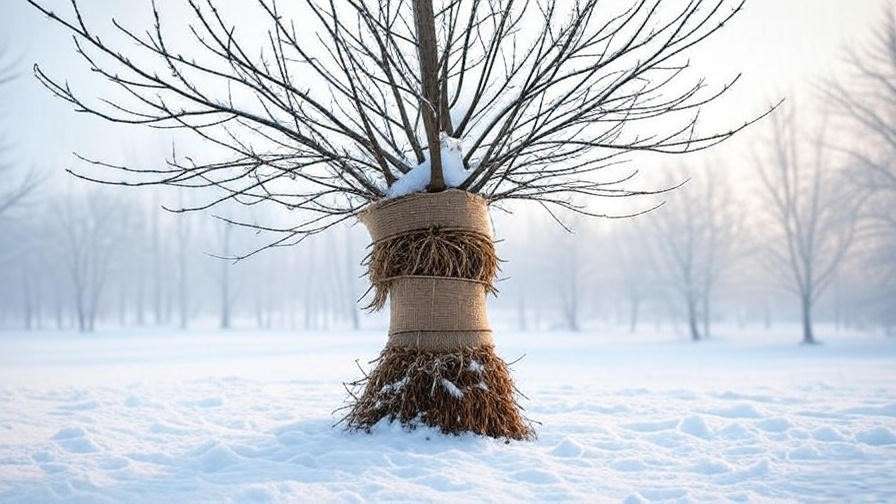
6. Harvesting and Enjoying Your Pixie Crunch Apples 🍎
6.1 When and How to Harvest ⛏️
Pixie Crunch apples typically ripen from late August to early October, depending on your climate. Signs of ripeness include:
- A deep red color with a slight sheen.
- Firm, crisp texture when gently squeezed.
- A sweet-tart flavor when tasted (test one apple first!).
To harvest, gently twist or lift apples upward to detach them from the branch. Avoid pulling, as this can damage spurs (the fruit-bearing structures). Use a basket to collect apples and handle them carefully to prevent bruising. Harvesting at the right time ensures the best flavor and storage quality.
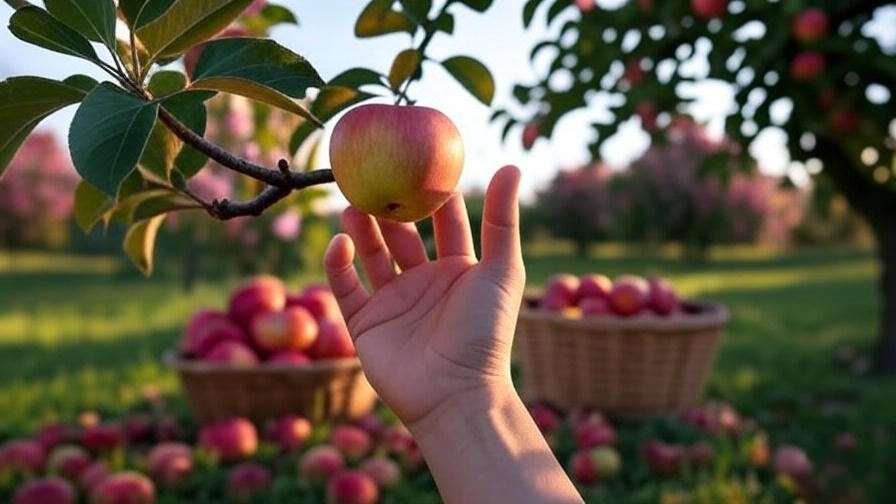
6.2 Storing and Using Your Apples 🥧
Store Pixie Crunch apples in a cool (32-40°F), humid environment, like a refrigerator crisper or a root cellar, to maintain freshness for up to 2 months. Wrap each apple in newspaper to prevent ethylene gas from hastening ripening. For culinary uses, try:
- Fresh Eating: Their crisp, sweet flavor is perfect for snacking.
- Baking: Make pies, crisps, or muffins with their firm texture.
- Preserving: Create applesauce, cider, or apple butter for year-round enjoyment.
A personal favorite is a simple Pixie Crunch apple pie — the sweet-tart balance shines with a touch of cinnamon!
7. Troubleshooting Common Pixie Crunch Problems 🔧
7.1 Why Isn’t My Tree Producing Fruit? 😕
If your Pixie Crunch isn’t fruiting, consider these causes:
- Lack of Pollination: Ensure a compatible pollinator tree (e.g., Honeycrisp) is nearby or that bees are active. Plant pollinator-attracting flowers if needed.
- Improper Pruning: Over-pruning can remove fruiting spurs. Follow the pruning guide above.
- Nutrient Imbalance: Excess nitrogen promotes leafy growth over fruit. Test soil and adjust fertilization.
Solutions include grafting a pollinator branch or consulting a local extension service for tailored advice.
7.2 Addressing Poor Growth or Yellowing Leaves 🌿
Poor growth or yellowing leaves often signal:
- Nutrient Deficiencies: Yellow leaves may indicate nitrogen or iron deficiency. Apply a balanced fertilizer or chelated iron as needed.
- Water Issues: Overwatering causes soggy roots; underwatering leads to drooping. Check soil moisture and adjust.
- Root Problems: Compacted or damaged roots stunt growth. Ensure proper planting depth and loose soil.
A soil test and inspection of the root zone can pinpoint the issue. In my experience, correcting water issues often resolves yellowing quickly.
8. Expert Tips for Long-Term Success 🌟
- Seasonal Care Checklist:
- Spring: Fertilize, prune, and monitor for pests.
- Summer: Water consistently and check for disease.
- Fall: Harvest, clean up fallen fruit, and mulch.
- Winter: Protect with mulch and tree wraps.
- Companion Planting: Grow marigolds or clover to deter pests and attract pollinators.
- Propagation: For advanced gardeners, graft Pixie Crunch scions onto dwarf rootstock for new trees. Consult extension services for grafting workshops.
These strategies, drawn from years of fruit tree care, ensure your Pixie Crunch thrives for decades.
9. FAQs About Pixie Crunch Apple Trees ❓
- How big does a Pixie Crunch apple tree get? Dwarf varieties reach 8-10 feet tall and wide, perfect for small spaces.
- Can I grow Pixie Crunch in a container? Yes, use a 15-20 gallon pot with good drainage and move it to optimize sunlight.
- How long until my tree bears fruit? Expect fruit in 2-4 years with proper care and pollination.
- What are the best companion trees for pollination? Honeycrisp, Gala, or Fuji are ideal mid-season bloomers.
- How do I protect my tree from deer or rabbits? Use tree guards, fencing, or repellent sprays like garlic-based products.
10. Conclusion: Your Path to a Thriving Pixie Crunch Apple Tree 🌳
Growing a Pixie Crunch apple tree is a rewarding journey that brings beauty, flavor, and pride to your garden. By choosing the right location, planting correctly, and following our expert care tips — from watering and fertilizing to pruning and pest control — you’ll enjoy sweet, crunchy apples for years to come. Start today with confidence, knowing you have a comprehensive guide backed by horticultural expertise. Share your Pixie Crunch success stories in the comments, or explore our related guides on growing Honeycrisp apples or organic pest control. Happy growing! 🍎

